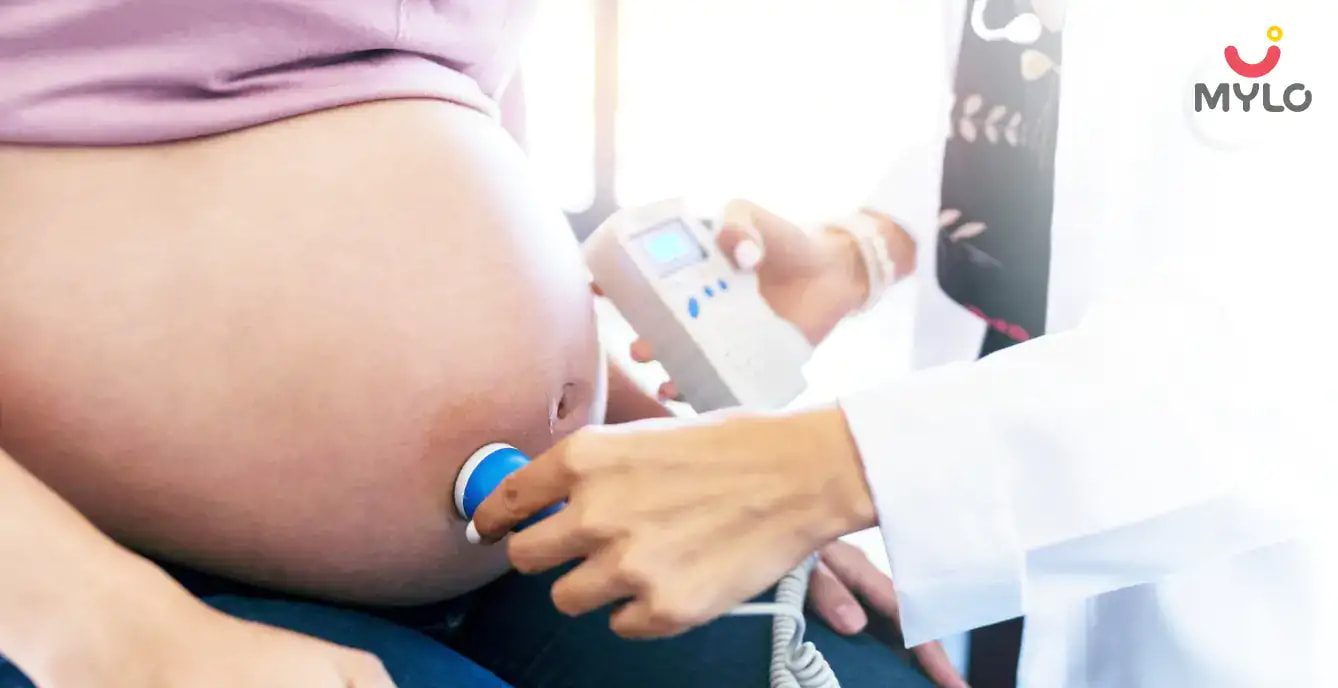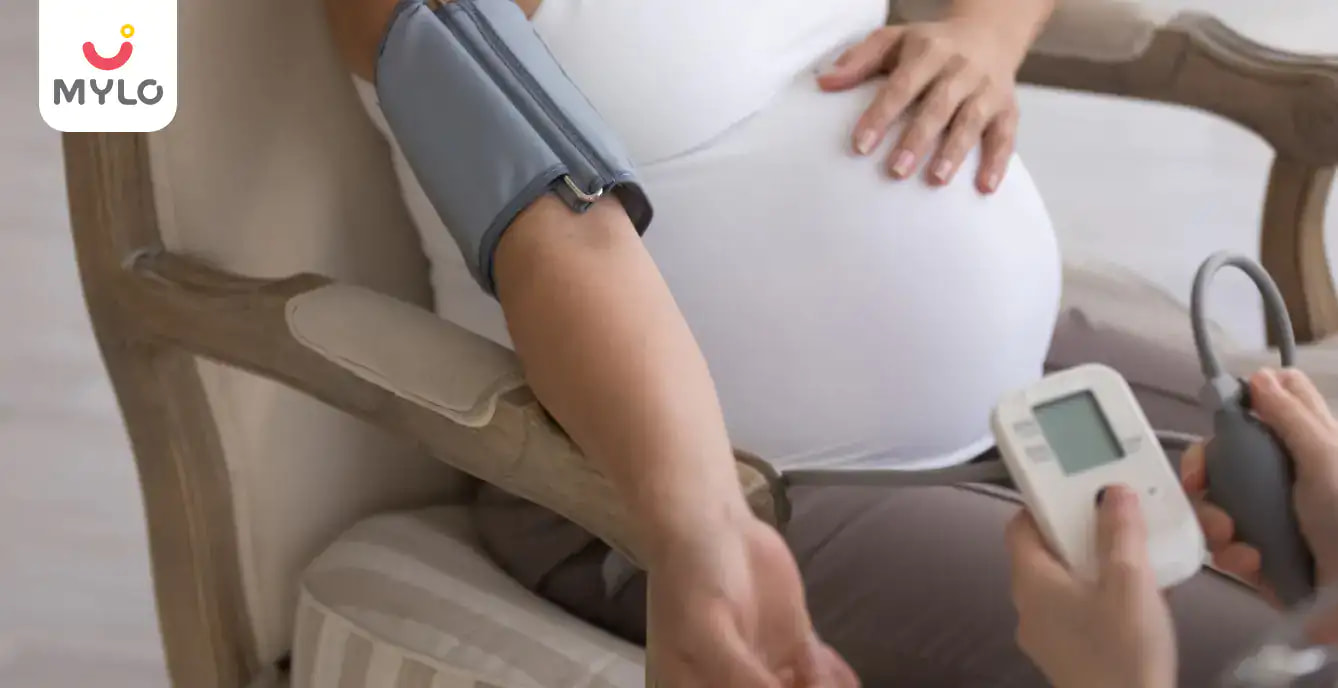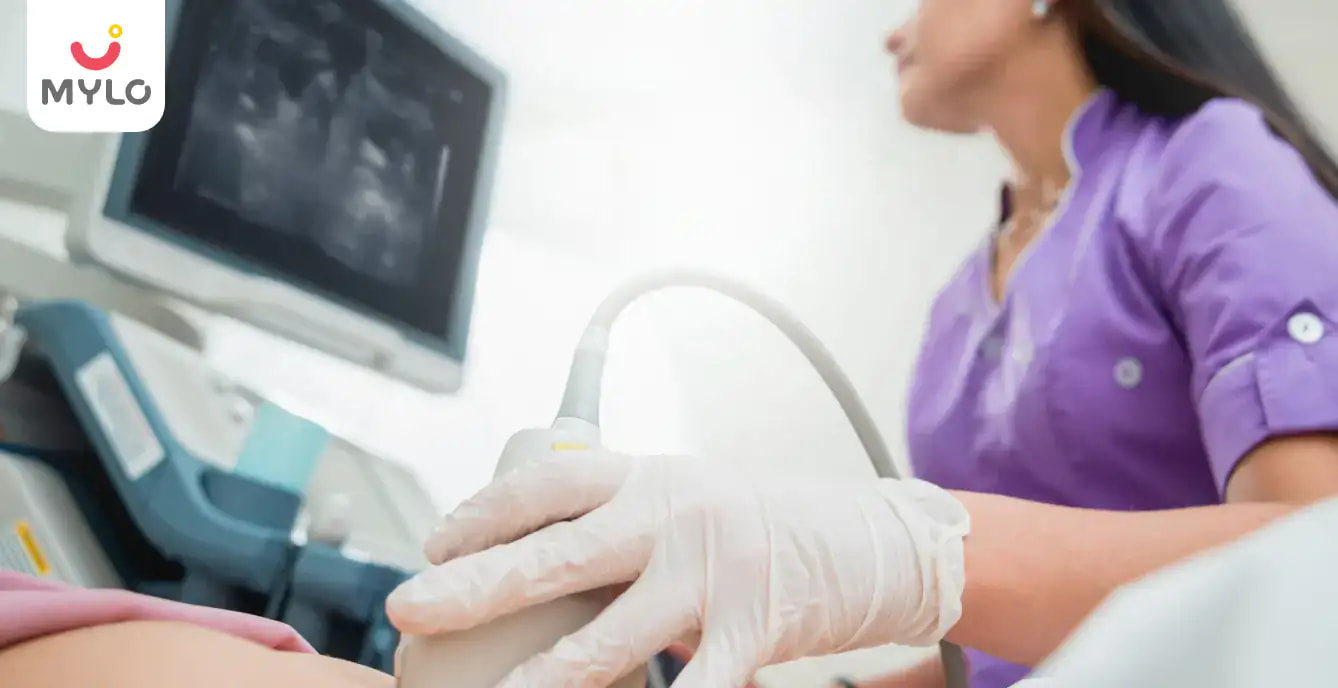Home

Scans & Tests

BPD in Pregnancy: A Key Factor in Estimating Fetal Weight and Gestational Age
In this Article

Scans & Tests
BPD in Pregnancy: A Key Factor in Estimating Fetal Weight and Gestational Age
Updated on 3 November 2023



Medically Reviewed by
Dr. Shruti Tanwar
C-section & gynae problems - MBBS| MS (OBS & Gynae)
View Profile

Biparietal diameter (BPD) is a fundamental biometric parameter used in prenatal ultrasound to evaluate fetal growth and development. BPD in pregnancy is a critical measurement for estimating gestational age, and it can also help identify fetal abnormalities. In this article, we'll understand what is normal BPD in pregnancy and what it can tell us about the developing fetus.
BPD Means in Pregnancy
The biparietal diameter (BPD) is one of the many measurements taken during pregnancy ultrasounds. BPD in ultrasound measures how broad a baby's head is from one parietal bone to the other as it grows. Additionally, BPD in pregnancy, with the head circumference (HC), the abdominal circumference (AC), and the length of the femur (FL), is also used to estimate the weight of the fetus.
The human skull consists of two parietal bones, one located on the left and the other on the right side. These bones exhibit a curved plate-like structure with four sides and two flat surfaces. To estimate the biparietal diameter of the skull, one can imagine placing a string from the left ear to the right ear, and letting it rest on the top of the head.
BPD is most accurate between the 14 and 20 weeks of pregnancy. After this point, there is more change. This measurement is typically taken by ultrasound technicians, who use digital measuring tools to examine the growth of a fetus displayed on a computer screen.
You may also like: Crown Rump Length (CRL) on Ultrasounds
How is BPD Measured?
Now that you know what is BPD in pregnancy, let us understand how it is measured. Most of the time, the BPD is measured during a normal ultrasound during pregnancy. Most people have between one and three ultrasounds, also called sonograms, from the beginning of their pregnancy until about week 20. People who are thought to be at high risk may need more ultrasounds.
Knowing what BPD means in pregnancy can be helpful in addition to the following three measurements:
- Abdominal circumference
- Head circumference
- Length of the femur (the longest bone in the human body).
Together, these three measurements help estimate the weight and age of the fetus (how far along the pregnancy is). The BPD measurement also lets the pregnant woman and their doctor know how the baby's brain is growing as it grows. The doctor is looking for the BPD measurement and the other measurements to be within what is considered the normal range.
Measuring the biparietal diameter late in pregnancy isn't as reliable for figuring out how far along the pregnancy is. Between week 12 and week 26 of pregnancy, BPD is usually accurate within 10 to 11 days for figuring out the gestational age. After week 26, though, it could be wrong by up to three weeks. Some studies also show that BPD in pregnancy 20 weeks and after doesn't work as well.
Method of Measuring BPD
BPD is best assessed along an axial plane that goes across the thalami and cavum septum pellucidum. The calvarium and cerebral hemispheres should seem similar when the transducer is placed perpendicular to the skull's central axis.
Calipers need to be positioned at the outer edge of the near calvarial wall and the inner edge of the far calvarial wall. Moreover, the cerebellar hemispheres shouldn't be in the plane of the image.
What is Normal BPD in Pregnancy?
The normal range for Biparietal Diameter in pregnancy varies depending on the gestational age. During the second trimester, specifically at 14 weeks, the normal range for BPD is approximately 29.4mm. By the 20th week of pregnancy, the normal range for BPD increases to around 49.4mm. These measurements are taken during an ultrasound and are used to assess fetal growth and development.
It's important to note that BPD measurements are just one aspect of fetal biometry and should be interpreted in conjunction with other parameters for a comprehensive evaluation of the fetus's size and well-being.
When BPD is Outside of the Normal Range?
If the baby's results are outside of what is considered normal, the doctor may suggest more tests. For example, if the baby's BPD is smaller than usual, that could mean that the baby's growth is restricted in the womb or that the baby's head is flatter than usual. If the baby's BPD is bigger than expected, it could mean that something is wrong with their health, like gestational diabetes.
A low BPD in pregnancy can be a sign that the head growth of the foetus needs to be watched. Women who may have been exposed to the Zika virus may worry about having a baby with a small head. If the BPD is two standard deviations below the mean, the head is too flat and microcephaly is thought to be a possibility. There are other signs of microcephaly, like how the head looks and how big it is.
You may also like: Fetal Growth and Development During Pregnancy
Conclusion
Understanding biparietal diameter or BPD meaning in pregnancy can help measure the progress of the baby's development, and also help identify if a baby may have certain conditions like microcephaly or hydrocephalus. But before anyone freaks out and worries that their baby has one of these conditions, know that as long as the BPD in pregnancy looks within normal parameters, the baby is perfectly healthy.
References
1. Göttlicher S, Madjaric J, Krone HA. (1976). Biparietal diameter of the fetal head during pregnancy. A comparative study. NCBI
2. Lee W, Balasubramaniam M, Deter RL, Hassan SS, Gotsch F, Kusanovic JP, Gonçalves LF, Romero R. (2009). Fetal growth parameters and birth weight: their relationship to neonatal body composition. Ultrasound Obstet Gynecol.
Tags
BPD in Pregnancy in Hindi, BPD in Pregnancy in Telugu, BPD in Pregnancy in Tamil, BPD in Pregnancy in Bengali





Medically Reviewed by
Dr. Shruti Tanwar
C-section & gynae problems - MBBS| MS (OBS & Gynae)
View Profile


Written by
Charu Pratap
Charu has been a seasoned corporate professional with over a decade of experience in Human Resource Management. She has managed the HR function for start-ups as well as established companies. But aside from her corporate career she was always fond of doing things with a creative streak. She enjoys gardening and writing and is an experienced content expert and linguist. Her own experiences with motherhood and raising a baby made her realize the importance of reliable and fact-based parenting information. She was engaged in creating content for publishing houses, research scholars, corporates as well as for her own blog.
Read MoreGet baby's diet chart, and growth tips

Related Articles
Related Topics
RECENTLY PUBLISHED ARTICLES
our most recent articles

Diet & Nutrition
গর্ভাবস্থায় আলুবোখরা: উপকারিতা ও ঝুঁকি | Prunes During Pregnancy: Benefits & Risks in Bengali

Diet & Nutrition
গর্ভাবস্থায় হিং | ঝুঁকি, সুবিধা এবং অন্যান্য চিকিৎসা | Hing During Pregnancy | Risks, Benefits & Other Treatments in Bengali

Women Specific Issues
স্তনের উপর সাদা দাগ: লক্ষণ, কারণ এবং চিকিৎসা | White Spots on Nipple: Causes, Symptoms, and Treatments in Bengali

Diet & Nutrition
গর্ভাবস্থায় পোহা: উপকারিতা, ধরণ এবং রেসিপি | Poha During Pregnancy: Benefits, Types & Recipes in Bengali

Diet & Nutrition
গর্ভাবস্থায় মাছ: উপকারিতা এবং ঝুঁকি | Fish In Pregnancy: Benefits and Risks in Bengali

Diet & Nutrition
গর্ভাবস্থায় রেড ওয়াইন: পার্শ্ব প্রতিক্রিয়া এবং নির্দেশিকা | Red Wine During Pregnancy: Side Effects & Guidelines in Bengali
- ইনার থাই চ্যাফিং: কারণ, উপসর্গ এবং চিকিৎসা | Inner Thigh Chafing: Causes, Symptoms & Treatment in Bengali
- গর্ভাবস্থায় ব্রাউন রাইস: উপকারিতা ও সতর্কতা | Brown Rice During Pregnancy: Benefits & Precautions in Bengali
- Velamentous Cord Insertion - Precautions, Results & Safety
- Unlock the Secret to Flawless Skin: 7 Must-Have Qualities in a Face Serum
- Unlock the Secret to Radiant Skin: How Vitamin C Serum Can Transform Your Complexion
- Gender No Bar: 10 Reasons Why Everyone Needs a Body Lotion
- Unlock the Secret to Radiant Skin How to Choose the Perfect Body Lotion for Your Skin Type
- Top 10 Reasons to Apply a Body Lotion After Every Bath
- Communication in Toddlers: Milestones & Activities
- How to Improve Vocabulary for Toddlers?
- A Comprehensive Guide to Understanding Placenta Accreta
- Vulvovaginitis in Toddlers Causes, Symptoms and Treatment
- A Comprehensive Guide to Understanding Cerebral Palsy in Children
- Bitter Taste in Mouth During Pregnancy: Understanding the Causes and Remedies


AWARDS AND RECOGNITION

Mylo wins Forbes D2C Disruptor award

Mylo wins The Economic Times Promising Brands 2022
AS SEEN IN
















- Mylo Care: Effective and science-backed personal care and wellness solutions for a joyful you.
- Mylo Baby: Science-backed, gentle and effective personal care & hygiene range for your little one.
- Mylo Community: Trusted and empathetic community of 10mn+ parents and experts.
Product Categories
baby carrier | baby soap | baby wipes | stretch marks cream | baby cream | baby shampoo | baby massage oil | baby hair oil | stretch marks oil | baby body wash | baby powder | baby lotion | diaper rash cream | newborn diapers | teether | baby kajal | baby diapers | cloth diapers |








